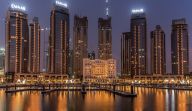Here are a few of the Happy City Values to consider for planning:
Livability
Designing for People, creating healthy cities and positive environmental impact
Resilience
Ecosystem resiliency planning is needed. Cities and urban districts must be prepared for adaptability and recovering quickly with minimal losses.
Impact
Design more inclusive, healthy and sustainable built environments. We spend 90% of our time indoors, the indoor environmental quality has direct impact on our productivity, our wellbeing, and our cognitive performance.
Digital Transformation
Until recently, digital transformation and smart technologies were considered primarily as tools for becoming more efficient. Sensor data and high-tech centers created new ways to manage complex city operations and automate infrastructure systems. Now technology is being injected directly into the lives of residents. Smartphones have become the keys to the city, putting real-time information about transit, traffic, food, waste, health services, and community news into millions of hands.
We are always reminded that smart city strategies start with people, not technology. It is not just installing digital interfaces in traditional infrastructure or rationalization city operations. It is about using technology and data purposefully to make informed decisions and deliver a better quality of life.
Ecology
Nature is the best designer, repairing and integrating natural systems is a vital challenge. Respect for broader ecosystems is the wisest strategy for designing value-added, long-term urban frameworks.
Cities, globally, are developing their Happiness Index as a set of interconnected policies and guidelines while influencing cultural and social change in the process.
The integration of many of these values can already be seen in few cities around the world and the positive impact on people and communities is unquestionable.
I was honored to share part of my research on the ‘’Happy City Theory’’ last year at The International Conference on Urban Development and Happiness in Thimphu, Bhutan. I only wish more cities had the chance to explore the impact of such theory like I did. -Hussam Raouf-










